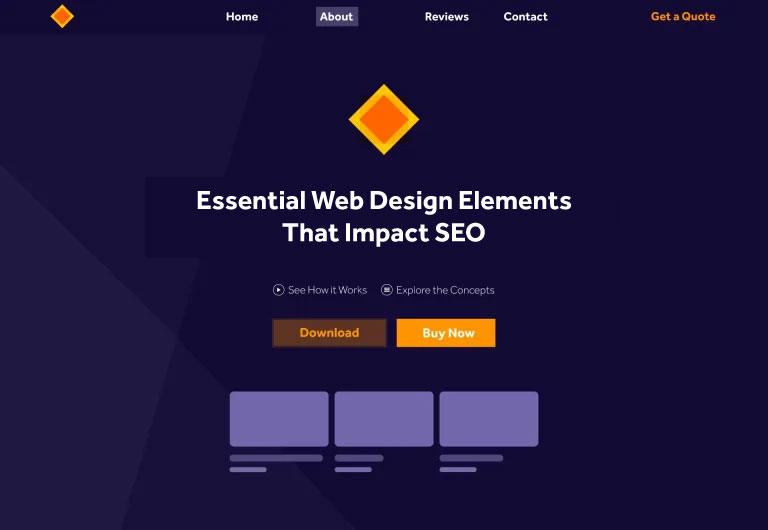Essential Web Design Elements That Impact SEO
When it comes to website design, aesthetics and user experience are crucial. However, it’s equally important to consider the impact of design on search engine optimisation (SEO). Certain web design elements can significantly influence your website’s visibility and ranking on search engine results pages (SERPs). In this article, we’ll explore the essential web design elements that have a direct impact on SEO, helping you create a website that excels in both design and search visibility.
Essential Web Design Elements
Mobile-Friendly Design:
In the mobile-first era, having a responsive and mobile-friendly design is paramount. Search engines prioritize mobile-friendly websites, and having a responsive design not only enhances user experience but also improves your SEO. Ensure that your website adapts seamlessly to different screen sizes, loads quickly, and provides a user-friendly experience across devices.
Site Speed and Performance:
Website speed is a critical factor in both user experience and SEO. Slow-loading websites frustrate users and lead to high bounce rates, negatively impacting your rankings. Optimising images, minimizing code, leveraging browser caching, and utilizing content delivery networks (CDNs) are some ways to enhance site speed and overall performance, thus improving your SEO.
Intuitive Site Navigation:
A well-structured and intuitive website navigation system is essential for user experience and search engines alike. Clear and organized navigation helps users find relevant information easily, leading to longer dwell times and lower bounce rates. Moreover, search engine crawlers can better understand the hierarchy and structure of your website, improving its indexability and overall visibility.
Proper Heading Tags:
Heading tags (H1, H2, H3, etc.) play a crucial role in organizing and structuring your web content. They not only make the content visually appealing but also help search engines understand the importance and relevance of different sections. Properly implementing relevant keywords within heading tags can boost your SEO efforts and improve the overall readability of your content.
Optimised URL Structure:
URLs should be concise, descriptive, and easy to understand. Clean and keyword-rich URLs provide both users and search engines with valuable information about the page’s content. Including relevant keywords in your URLs can improve search engine visibility and make it easier for users to comprehend the page’s purpose.
Image Optimisation:
Images are an integral part of web design, but they can also impact SEO. Optimising images by compressing their file sizes, using descriptive alt tags, and providing relevant captions can enhance your website’s load time, accessibility, and search engine visibility. Additionally, properly optimised images can appear in image search results, driving additional traffic to your site.
Quality and Engaging Content:
While content is not a direct web design element, it greatly influences the success of your website’s SEO. Engaging, informative, and well-structured content helps attract and retain users, encourages natural link building, and increases your website’s visibility in search results. Integrate relevant keywords strategically within your content while maintaining its readability and value.
Summary for essential web design elements:
Creating a visually appealing and user-friendly website is essential, but it’s equally important to consider the impact of design choices on SEO. By incorporating essential web design elements like mobile-friendliness, site speed optimisation, intuitive navigation, proper heading tags, optimised URLs, image optimisation, and quality content, you can enhance both user experience and search engine visibility. Striking the right balance between design and SEO will ultimately result in a website that excels in both aesthetics and performance on the search engine results pages.

Remember, implementing these essential web design elements is an ongoing process. Regularly monitor your website’s performance, adapt to new design trends, and stay updated with SEO best practices to maintain a competitive edge in the ever-evolving online landscape.






